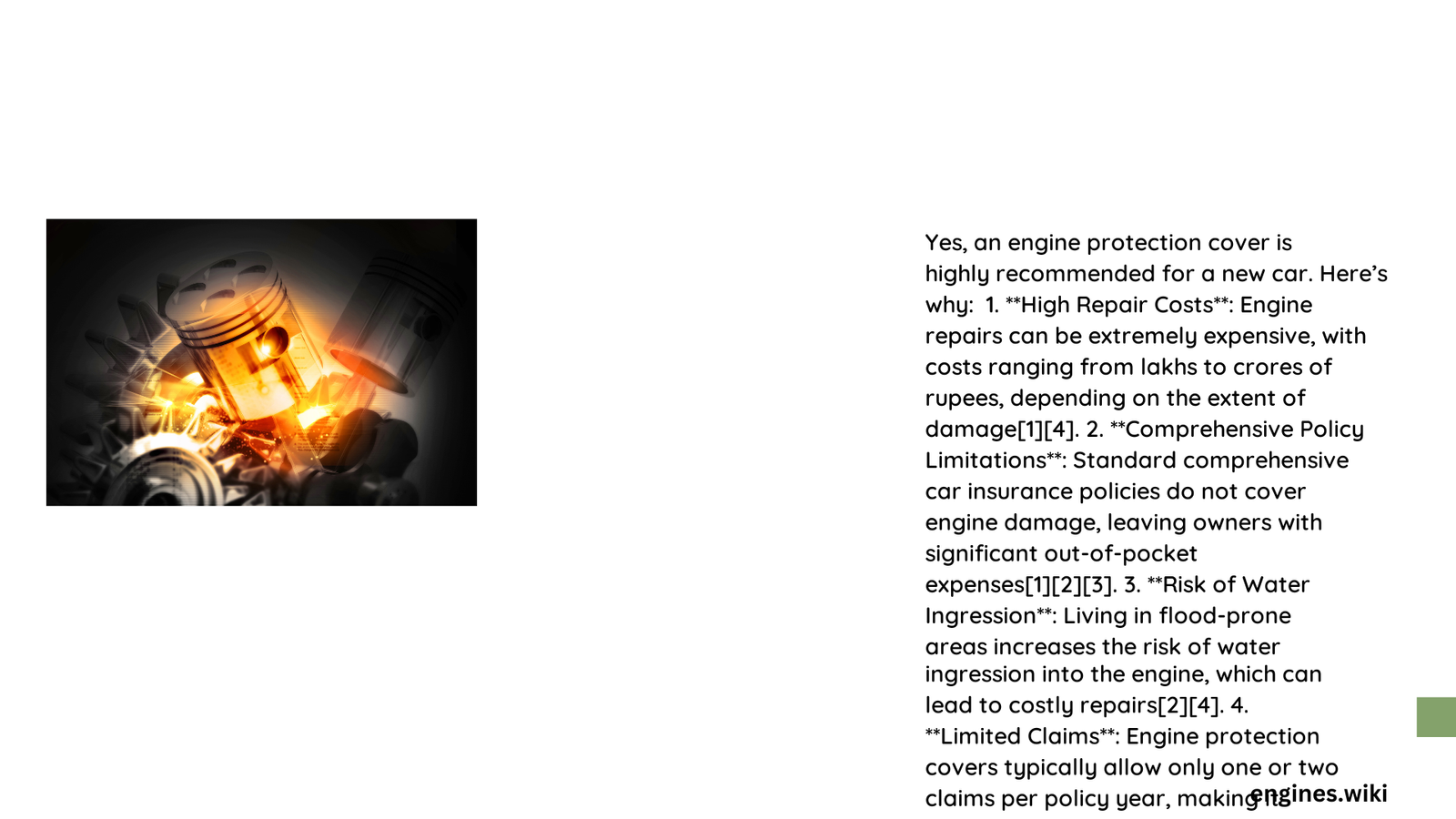Modern car owners often wonder about the necessity of additional engine protection for their new vehicles. While manufacturer warranties provide initial coverage, engine protection covers offer extended financial security against specific non-accidental damages that might not be included in standard insurance policies. Understanding the nuanced protection mechanisms can help vehicle owners make informed decisions about safeguarding their automotive investment.
What Makes Engine Protection Cover Crucial?
Engine protection covers serve as a critical financial safety net for vehicle owners, addressing potential repair scenarios that standard warranties might not encompass. Let’s explore the key aspects of this specialized insurance add-on.
Why Consider Engine Protection for New Cars?
New cars, despite their pristine condition, are not immune to potential mechanical challenges. Engine protection covers become particularly relevant due to several compelling reasons:
- Limited Manufacturer Warranty Duration
- Typical powertrain warranties last 5-8 years
- Mileage restrictions range from 60,000 to 150,000 miles
-
Coverage expires relatively quickly compared to vehicle lifespan
-
Specific Damage Scenarios
- Water ingression protection
- Lubricant oil leakage coverage
- Hydrostatic lock damage compensation
What Damages Does Engine Protection Cover?
| Damage Type | Coverage Extent | Potential Repair Cost |
|---|---|---|
| Water Ingression | Complete engine component replacement | $3,000 – $8,000 |
| Oil Leakage | Gasket and seal repairs | $500 – $2,500 |
| Hydrostatic Lock | Engine block and internal component replacement | $4,000 – $10,000 |
How Expensive Are Repair Costs Without Protection?
Engine repairs can be financially devastating. Without proper coverage, owners might face:
- Major Engine Replacement
- Average cost: $4,000 – $10,000
-
Potential total vehicle write-off
-
Partial Engine Repair
- Component-specific repairs: $1,000 – $5,000
- Significant out-of-pocket expenses
When Should You Purchase Engine Protection?
Ideal timing for purchasing engine protection includes:
- Immediately After Vehicle Purchase
- Before Manufacturer Warranty Expiration
- For Vehicles Operated in High-Risk Environments
- Flood-prone regions
- Areas with extreme temperature variations
- Regions with poor road infrastructure
What Factors Influence Engine Protection Cost?
Several variables determine the premium:
- Vehicle make and model
- Age of the vehicle
- Driving conditions
- Manufacturer’s reliability rating
- Previous maintenance history
Are There Alternatives to Engine Protection Cover?
Alternative protection mechanisms include:
- Extended manufacturer warranties
- Comprehensive vehicle service contracts
- Manufacturer-specific maintenance plans
- Robust emergency vehicle repair funds
Conclusion: Making an Informed Decision

While engine protection covers offer valuable benefits, they’re not universally mandatory. Carefully assess your vehicle’s specific requirements, driving conditions, and financial capacity before making a decision.
Recommendations
- For New Car Owners: Evaluate coverage within first two years
- High-Risk Environment Drivers: Strongly consider additional protection
- Budget-Conscious Consumers: Compare multiple insurance providers
Pro Tips
- Read policy details meticulously
- Understand exact coverage limitations
- Maintain regular vehicle maintenance
Reference:
– Insurance Information Institute
– Consumer Reports Automotive
– National Highway Traffic Safety Administration
